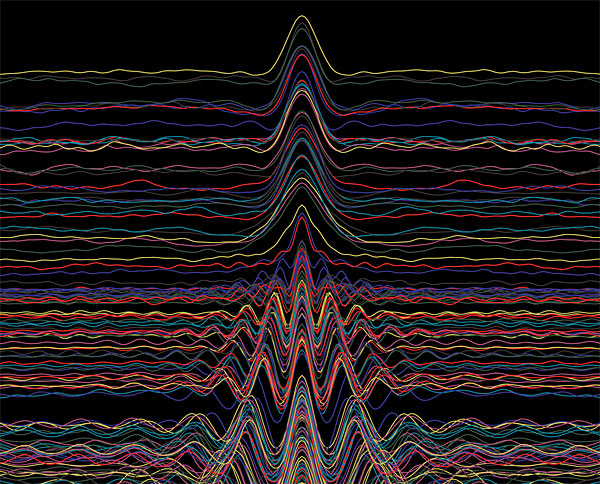A neural window into the cochlea
DOI: 10.1063/PT.3.1762
In the initial stage of auditory processing, the snail-shaped cochlea in the inner ear performs an exquisite frequency analysis via a mechanical coupling that has intrigued physicists for more than a century yet is still not entirely understood (see, for example, Physics Today, April 2008, page 26
Philip Joris and colleagues at the University of Leuven in Belgium have recorded and studied the impulses that white noise produces along individual auditory nerve fibers in a cat’s ear. Each of the curves here, arranged from bottom to top in increasing frequency, plots the autocorrelations in a single fiber’s spike sequence. The curves reveal a transition in the neuronal encoding, from instantaneous sound-waveform information at low frequencies, as evidenced by the oscillations, to envelope information at high frequencies, where there is only a single peak. And when the researchers compared an individual fiber’s responses to differing sound intensities, they found surprisingly little shift in the correlation patterns; that, they suggest, contributes to the stability of sound localization based on timing differences in the signals from the left and right ears (see Bill Hartmann’s article in Physics Today, November 1999, page 24
To submit candidate images for Back Scatter, visit http://contact.physicstoday.org

Image submitted by Pascal Michelet and Philip Joris





